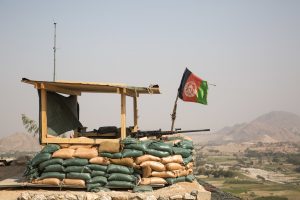A recently released United Nations report, in the course of providing an annual update from the Analytical Support and Sanctions Monitoring Team to the UN Security Council on Afghanistan, highlighted the severe difficulties underlying the U.S.-Taliban peace agreement.
The report was produced in late April and sent to the UN Security Council on May 19, it was released to the public on June 2. Media coverage of the report has focused largely on its revelation that the Taliban maintains ties with al-Qaeda, but taken in its entirely the report serves as a testament to the fragility of the U.S.-Taliban peace agreement.
“Relations between the Taliban, especially the Haqqani Network… and Al-Qaida remain close, based on friendship, a history of shared struggle, ideological sympathy and intermarriage. The Taliban regularly consulted with Al-Qaida during negotiations with the United States and offered guarantees that it would honor their historical ties,” the report’s summary states.
The report’s summary also notes that “Al-Qaida has reacted positively to the agreement, with statements from its acolytes celebrating it as a victory for the Taliban’s cause and thus for global militancy.”
The picture is even more complex as the report notes that there are reportedly fissures within the Taliban leadership: “There are also reported divisions within the Taliban’s Political Office, including among the delegation team between those aligned with Abdul Ghani Baradar Abdul Ahmad Turk… and a more hard-line group close to Sher Mohammad Abbas Stanekzai.” The Taliban leadership, the report suggests, “had not fully disclosed the details of the agreement, particularly any commitment to cut ties with Al-Qaida and foreign terrorist fighters, for fear of a backlash [ from the rank and file].”
All this serves to further underscore the fragility of the agreement settled on Leap Day 2020.
The agreement, officially titled “Agreement for Bringing Peace to Afghanistan between the Islamic Emirate of Afghanistan which is not recognized by the United States as a state and is known as the Taliban and the United States of America,” comprised of four parts, the first two of which were to pave the way for the latter two: 1) guarantees that “will prevent the use of the soil of Afghanistan by any group or individual against the security of the United States and its allies”; 2) an announced timeline for the withdrawal of foreign forces from Afghanistan; 3) intra-Afghan negotiations to begin on March 10; and 4) a permanent and comprehensive ceasefire.
The recent UN report notes, in dry diplomatic language: “Differences in interpretation of the agreement will be difficult to resolve.”
One key difference is highlighted by repeated instances of violence in Afghanistan. The Taliban continues to stage attacks against Afghan government forces and as the report notes, “The United States and NATO have stated that they have no intention of ceasing to provide support to the Afghan National Defense and Security Forces and would continue to defend them should they come under attack.”
The Afghan government was not party to the February 29 agreement, and intra-Afghan talks did not begin, as envisioned, on March 10. After initial contention over prisoner releases promises in the agreement but not discussed with the Afghan government, there remains difficulties even as prisoners are released and talks begin.
A ceasefire declared in honor of the Eid holiday, which marks the end of Ramadan, From May 24 to May 26 saw a significant drop in attacks, Afghan officials said. At the same time, there had been reports of ceasefire violations and continued attacks. The Afghan government, only recently reunited under a political power-sharing deal between Ashraf Ghani and Abdullah Abdullah — who each claimed victory in last year’s presidential election — tried to take advantage of the holiday ceasefire and pair its extension with talks and prisoner releases. But as Tolo News reported recently, the Taliban now claim that 426 of the 2,710 prisoners released by the Afghan government aren’t Taliban. In return, the Afghan government says that a number of the 460 prisoners held by the Taliban who have been released were not government forces.
It’s the kind of nitpicking that preserves for each side a future opportunity to lambaste the other for not following the agreement and break from it.
While the U.S.-Taliban agreement is flimsy in a number of areas, it does specifically name al-Qaeda in a fashion that seems hard to derive a different interpretation from: “[The Taliban] will not allow any of its members, other individuals or groups, including al-Qa’ida, to use the soil of Afghanistan to threaten the security of the United States and its allies.”
Thus, the deep ties between the Taliban and al-Qaeda are a serious and significant facet that could break the fragile agreement apart. The UN report states: “One Member State reported that the regularity of meetings between Al-Qaida seniors and the Taliban ‘made any notion of a break between the two mere fiction’.”
































